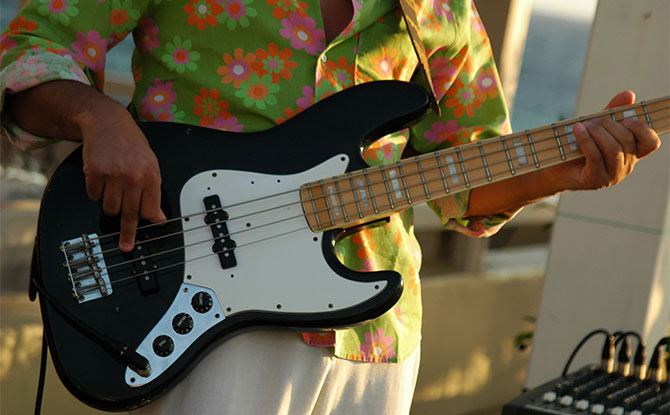In this EQ Ear Training for audio engineers, we will be listening to how a 9dB cut at different frequencies affects the sound of a Jazz Bass.
For this listening exercise, we will be applying +9dB cut to a Jazz Bass. This is a chance to better understand the effect that EQ has on the sound of a Jazz Bass.
What is a Jazz Bass?

Let’s start with a quick explanation of what is a Jazz Bass?
The Fender Jazz Bass, often simply referred to as a Jazz Bass or J Bass, is a model of bass created by Fender Musical Instrument Corporation in 1960.
It has two single-coil pickups, one near the neck of the instrument and the other near the bridge. This makes it capable of producing a wide range of tonal options, from deep and warm to bright and snappy.
In common usage, the term Jazz Bass is used to refer to any instrument made by any manufacturer in this style.
EQ Ear Training: Effects of 9dB Cut on a Jazz Bass
For this EQ Ear Training video, we will be applying a 9dB cut to the sound of a Jazz Bass at different intervals. Listen along through a set of headphones to hear how the EQ changes the characteristic of the bass. This is how EQ can be used to shape the sound of the bass.
Here are some notes on the video as you listen along. We start off with a listen through of the original bass track without any EQ. After that, there will be a 9dB cut with a Q of 3.2 applied at regular intervals.
Listening Notes
Effect of cuts at
- 63Hz: Reduces the weight of low end.
- 125Hz: Less defined body.
- 250Hz: Reduces the bass definition.
- 500Hz: Reduces the boxiness of the bass. Brings out the low frequencies.
- 1kHz: Mutes the high end of the bass.
- 2kHz: Mutes the high end of the bass.
- 4kHz: Mutes the high end of the bass.
- 8kHz: Very little audible impact to the sound of the bass.
- 16kHz: Very little audible impact to the sound of the bass.
We hope that the listening notes help you as you listen along to the video and give you a better way to relate EQ to the impact it can have on the sound of an instrument.
Each instrument is different but you can use the above as a guide when you need to make decisions about EQ.
If you liked this video, you may also wish to listen to this other one on ear training with a 9dB boost to the Jazz bass sound or this with a 12dB boost to a Telecaster Guitar.

